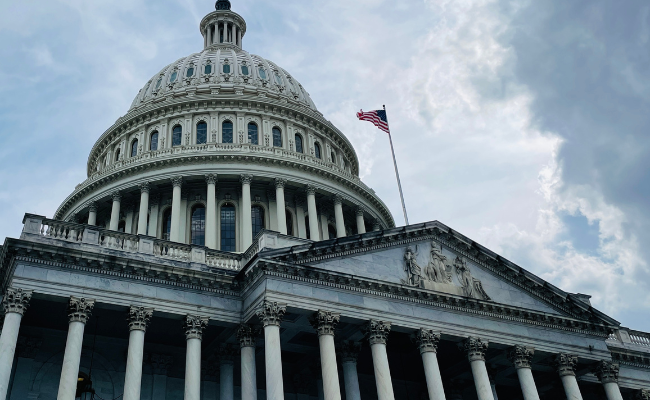Other Transaction Authorities in Government Contracting
April 9, 2025

Other Transaction Authorities (OTAs), also known as Other Transaction Agreements, are quickly changing the way that the government implements new technologies. Using an OTA instead of traditional contracting methods is becoming the preferred way to contract with the Department of Defense (DoD) since they work faster, more efficiently, and are more cost effective.
What is an Other Transaction Authority/Agreement?
The term Other Transaction Authority refers to the authority to award a contract with the Department of Defense under 10 U.S.C. 4022. DoD Other Transaction Authorities allow government agencies to research new projects, prototype new systems, and bring these projects to production.
What is an Other Transaction?
An Other Transaction (OT) is a type of procurement mechanism used by federal agencies to enter into agreements with commercial companies, non-profits, or academic institutions, or other nontraditional defense contractors.
“Other Transaction” may refer to any transaction that is not a traditional contract, grant, or other cooperative agreement in accordance with the 10 U.S.C. 4022. These types of agreements are not generally subject to the stringent federal laws and regulations that apply to traditional procurement contracts, grants, or other agreements.
Some OTAs are granted under 10 U.S.C. 4021 which allows the same flexibility as those under 10 U.S.C. 4022. However, these fall under a different scope. While 10 U.S.C. 4021 covers projects that focus on basic, applied, and advanced research, 10 U.S.C. 4022 extends that authority on prototype projects and follow-on production.

What is the Purpose of an Other Transaction Agreement?
The main purpose of an OTA is to provide a more streamlined and flexible process for government innovation. OTAs in government contracting are needed to keep up with the high expectations of scientific advancement which usually come with the cost of slower implementation from government offices. By using an OTA, agencies can cut through the “red tape” and break through technological advancements at a faster and more efficient pace.
How OTAs Differ From FAR-Based Government Contracts
Federal Acquisition Regulations (FAR), or FAR-based contracts are another common type of government contract. Unlike OTAs, FAR-based contracts are more rigid in terms of who can access them, the scopeof the contracts, and who they are managed by. These contracts can often take many months, and even several years, before they are awarded.
On the other hand, Other Transaction Agreements are a more flexible alternative since they don’t have to follow the strict regulations of FAR-based government contracts. The timeline for OTAs is also significantly less, with NSTXL’s average timeline to award being 120 days or less.
Other differences between OTAs and FAR-based contracts are highlighted in the graphic below:

How Do Other Transaction Authorities Work?
There are three main steps for OTAs in government contracting: (1) solicitation, evaluation and selection; (2) iterative development; and (3) successful completion and transition.
Solicitation, Evaluation, and Selection
The process starts with solicitation and selection, where government agencies will outline their requirements and criteria in a Request for Proposals (RFP). Once those criteria have been outlined in the RFP, industry partners can submit proposals for prototype opportunities that showcase their innovative solutions and developmental approaches. The Government will evaluate each proposal against the criteria outlined in the RFP, the technical feasibility, cost effectiveness, and scalability. Other Transaction Agreements prioritize creativity, flexibility, and disruptive potential, unlike traditional government contracting processes, which focus instead on rigorous specifications and strict compliance.
Iterative Development
Once industry partners have been selected by government agency to work on the project, rapid prototyping begins. Partners begin improving their solutions based on real-time feedback and adaptive requirements. By working proactively, partners can guarantee continuous improvements and ensure that the final product meets the government’s needs effectively.
Evaluation and Transition
Finally, once the project has concluded and determined to be successfully completed (when the exit criteria and deliverables depicted in the Statement of Work are accepted by the Government), agencies will assess the overall performance and decide if the project will transition to a full-scale production or if it needs further development.

Why Should You Use an OTA for Government Contracting?
There are many benefits to using an Other Transaction Agreement over traditional government contracting methods. Many agencies prefer this contracting method because of the flexibility, shorter timelines, cost effectiveness, and creativity that they provide.
Other Transaction Agreements Offer a Faster Turnaround
Traditional contracting methods can take several months to several years before they are ever awarded. But with an Other Transaction Authority, projects can be awarded in as little as 70-120 days. Consortium managers such as National Security Technology Accelerator (NSTXL) bypass the challenges of traditional contracting, which speeds up the process and transitions innovative technologies into the hands of the U.S. Warfighter more quickly.
Other Transaction Authorities Are More Cost Effective
OTAs help cut down the costs of research projects by simplifying the procurement process, reducing paperwork, and speeding up contract approvals. This makes it easier to use resources efficiently, avoid delays, and focus funding on innovation and progress instead of red tape.
Other Transaction Agreements Allow the Most Flexibility
Because OTAs don’t have as strict of requirements as traditional contracting methods, they offer for the most flexibility in terms of acquisition, development, and creativity. They instead focus on the desired outcome of the project instead of worrying about strict rules and regulations.
Diverse industry participation and emergence of new technologies is a priority for OTAs in government contracting. Since the goal is to keep expanding the government’s technological capabilities, having flexibility in this area is crucial for success.

An Other Transaction Authority is Lower Risk Than Traditional Contracting Methods
While the word “innovation” is often associated with “risk”, the structured framework that OTAs operate within mitigate these risks. Agencies can test new concepts in controlled environments, which allows them to identify challenges or roadblocks earlier on and make the changes necessary. This proactive risk management strategy means that costly failures are less likely, and innovations during these opportunities are more likely to succeed.
OTAs Encourage More Collaboration and Creativity
OTAs in government contracting thrives in creative and collaborative environments. Because they operate within government agencies, academic institutions, and industry partners, the opportunities for collaboration and innovation are limitless. By leveraging the collective expertise and vision of these diverse stakeholders, agencies can access a wealth of knowledge, driving bold, forward-thinking solutions to complex problems.
How DoD Other Transaction Authorities Are Changing Government Innovation
Other Transaction Authorities were created to overcome the hurdles that come with traditional government contracting. By expanding the pool of innovators and allowing non-traditional organizations to enter the defense contracting space, the door was opened to bring new opportunities, new ideas, and new technology to the government.
OTAs introduce fast-track research initiatives, allowing for quicker innovation and development. They eliminate many traditional barriers, streamlining the process for both agencies and contractors. Additionally, they increase the government’s ability to capitalize on emerging technology opportunities and leverage flexible processes, making it easier for non-traditional companies to participate and contribute.
New Executive Order Encourages Use of OTAs
On April 17th, 2025, President Donald Trump signed an Executive Order that called for the modernization of defense acquisitions through the use of other transaction authorities. The order establishes OTAs as the preferred contracting method to “deliver state-of-the-art capabilities at speed and scale through a comprehensive overhaul of [the contracting] system” (Whitehouse.gov). By prioritizing OTAs, this order seeks to foster innovation and agility within the defense industrial base, enabling the DoD to more effectively collaborate with non-traditional contractors and gain access to cutting edge technology faster.
Working With a Consortium Manager
Consortium managers like NSTXL demonstrate the effectiveness of this approach, with over 60% of awards in 2024 going to non-traditional companies. NSTXL’s mission is to build a network of innovators and creators across the most sought-after emerging technology fields.
NSTXL currently supports two OTAs: Strategic & Spectrum Missions Advanced Resilient Trusted Systems (S2MARTS) and Space Enterprise Consortium (SpEC).
To learn more about opportunities in these OTAs, join our mission by becoming a member! Or, if you’re looking to partner with NSTXL, reach out to our team.





